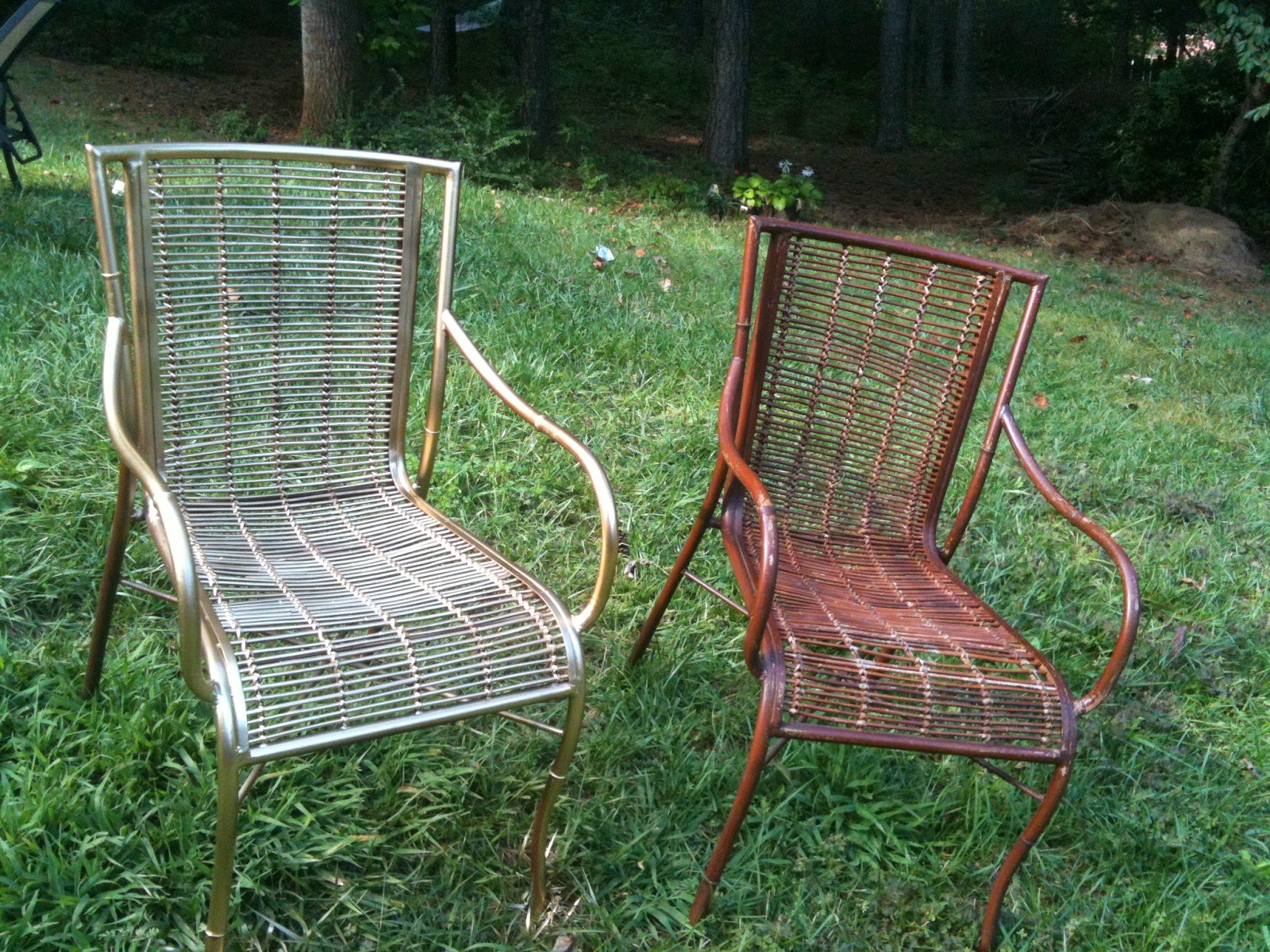Y'all know that I love finding stuff at thrift stores, and I'm prone to digging through people's garbage to find treasures like this Michael Delacroix lithograph. Hell, I will even get in dumpsters at construction sites to salvage scrap wood. (Tetnus shot, anyone?)
I will also paint anything (and everything) gold. Rustoleum is my spray paint of choice.
I had been searching and searching for some gold chiavari chairs to go in my office, but could never find a good deal on them. So one day, I was junk store shopping with my sister LaSaySay and we found these spider web-covered, hideous metal and rattan chairs. They were marked at a ridiculous price (something like $40 each) so we went to the store owner to strike a deal.
Before I could open my mouth to haggle, LaSaySay said, "She'll give you $35 to take those chairs. Cash." Good job.
So, we tossed these things in my trunk, drove them home, and got to work. No matter what you are painting, regardless of if it is wood, metal, or even plastic, there is some prep work you need to do before you go to town with your paint.
1. Rinse the object with water. This will get the initial layer of grime off of it. Since these were outdoor-ish chairs, I took them out in the yard and blasted them with the hose. If your object to paint is more delicate, then use a damp cloth to gently clean it.
2. Wash the object with white vinegar. Mix 1 part vinegar to 10 parts water. The vinegar is gentle enough not to harm anything, but will help to de-grease whatever you are about to paint. Let it dry very well - a few hours in the sunshine, or overnight indoors. (Note: wooden surfaces may need a day or two to dry completely, especially if the original finish has rubbed off.)
3. Lightly sand. Even if you are painting plastic, you need to rough up the surface a little to get the paint to stick. I took a fine grit sandpaper and ran it over the metal parts of the chair. The rattan parts were pretty beaten up so I smoothed over any rough spots. Be careful not to gouge the surface or it may show scratches even after painting.
4. Spray paint in thin layers, allowing plenty of time to dry between coats. I like to paint outside in the yard. Sometimes I will put down a layer of newspaper on the grass to protect it, but if the grass is tall and needs mowing (like in the picture) I don't mind getting paint on it. This has the added benefit of getting The Hubs to mow the lawn.
I'll be having a paint-a-thon sometime soon when it's sunny and not too windy. My to-do list includes some metal bookshelves and a bunch of picture frames.
- Maggie White



No comments:
Post a Comment